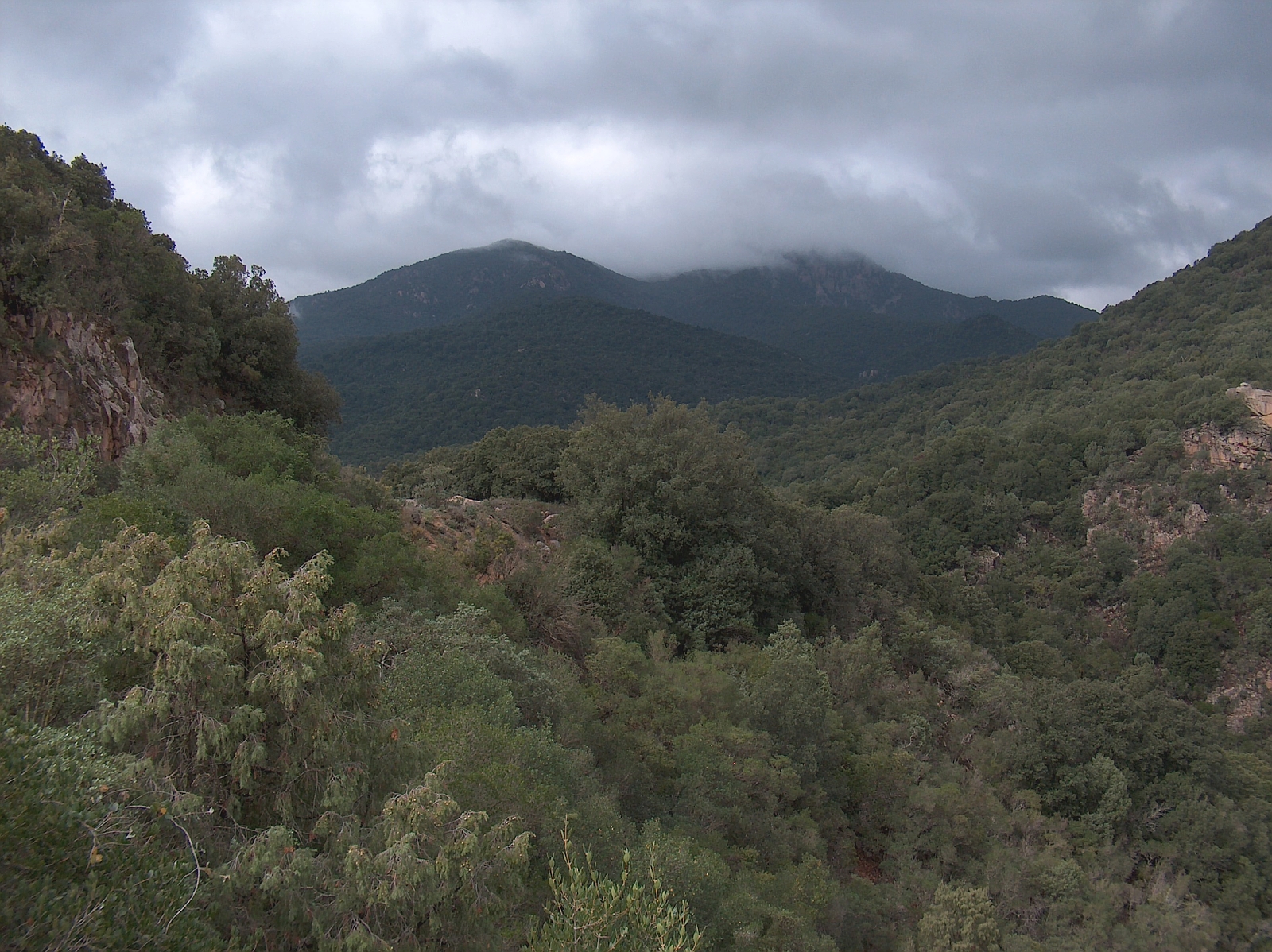|
Nuxis
Nuxis is a ''comune'' (municipality) in the Province of South Sardinia in the Italian region Sardinia, located about west of Cagliari and about east of Carbonia. Nuxis borders the following municipalities: Assemini, Narcao, Santadi, Siliqua, Villaperuccio. History The village was founded around the year 1000 AD, though there is archaeological evidence of a nuragic settlement, and grew out of a farm settlement. Nuxis' pastoral settlement was aided by the presence of Benedictine monks in nearby Narcao and Flumentepido.S. Colomo, "Practical Guide to Sardinia", AFS 1993. Main sights The small church, of area less than , of Sant'Elia di Tattinu, located approximately south of the village is an example of Byzantine architecture Byzantine architecture is the architecture of the Byzantine Empire, or Eastern Roman Empire. The Byzantine era is usually dated from 330 AD, when Constantine the Great moved the Roman capital to Byzantium, which became Constantinople, until the .. ... [...More Info...] [...Related Items...] OR: [Wikipedia] [Google] [Baidu] |
Santadi
Santadi is a ''comune'' (municipality) in the Province of South Sardinia in the Italian region Sardinia, located about southwest of Cagliari and about southeast of Carbonia. Santadi borders the following municipalities: Assemini, Domus de Maria, Nuxis, Piscinas, Pula, Teulada, Villa San Pietro, Villaperuccio Villaperuccio (Sa Baronia in Sardinian) is a ''comune'' (municipality) in the Province of South Sardinia in the Italian region Sardinia, located about southwest of Cagliari and about southeast of Carbonia, in the lower Sulcis. Villaperuccio b .... Starting from a hill next to the small town of Santadi, it is possible to see how the urban development system develops in concentric circles. This fact gave rise to the hypothesis that Santadi is what remains of the capital of the island mentioned by Plato in the third chapter of the Timaeus and in Critias. References Cities and towns in Sardinia {{Sardinia-geo-stub ... [...More Info...] [...Related Items...] OR: [Wikipedia] [Google] [Baidu] |
Villaperuccio
Villaperuccio (Sa Baronia in Sardinian) is a ''comune'' (municipality) in the Province of South Sardinia in the Italian region Sardinia, located about southwest of Cagliari and about southeast of Carbonia, in the lower Sulcis. Villaperuccio borders the municipalities of Narcao, Nuxis, Perdaxius, Piscinas, Santadi, and Tratalias. Its territory includes the pre-Nuragic necropolis of Montessu, some 40 nuraghe and the menhir A menhir (from Brittonic languages: ''maen'' or ''men'', "stone" and ''hir'' or ''hîr'', "long"), standing stone, orthostat, or lith is a large human-made upright stone, typically dating from the European middle Bronze Age. They can be fou ... site of ''is perdas croccadas''. References Cities and towns in Sardinia 1979 establishments in Italy States and territories established in 1979 {{Sardinia-geo-stub ... [...More Info...] [...Related Items...] OR: [Wikipedia] [Google] [Baidu] |
Assemini
Assemini (; sc, Assèmini ) is a ''comune'' (municipality) in the Metropolitan City of Cagliari in the Italian region Sardinia, located about northwest of Cagliari in the plain of the Cixerri, Flumini Mannu and Sa Nuxedda rivers. It includes notable forest area which are part of the Sulcis Regional Park. It has also a long tradition in the production of ceramics, lasting from the Carthaginian domination. Assemini is part of the Cagliari metropolitan area and borders the following municipalities: Cagliari, Capoterra, Decimomannu, Elmas, Nuxis, San Sperate, Santadi, Sarroch, Sestu, Siliqua, Uta, Villa San Pietro. Main sights * Historical Campidano-type houses. * Church of St. Peter, dating from 11th century but mostly rebuilt in Gothic style under the Aragon Aragon ( , ; Spanish and an, Aragón ; ca, Aragó ) is an autonomous community in Spain, coextensive with the medieval Kingdom of Aragon. In northeastern Spain, the Aragonese autonomous community compris ... [...More Info...] [...Related Items...] OR: [Wikipedia] [Google] [Baidu] |
Narcao
Narcao (Narcau o Nuracau in Sardinian language) is a ''comune'' (municipality) in the Province of South Sardinia in the Italian region Sardinia, located about west of Cagliari and about east of Carbonia. Narcao borders the following municipalities: Carbonia, Iglesias, Nuxis, Perdaxius, Siliqua, Villamassargia, Villaperuccio. In the ''frazione'' of Tarraseo there are remains of a Punic-Roman temple dedicated to the goddess Demetra. Twin towns * Bovegno Bovegno (Brescian: ) is a ''comune'' in the province of Brescia, in Lombardy. It borders the communes of Artogne, Berzo Inferiore, Bienno, Collio, Esine, Gianico, Irma, Marmentino and Pezzaze. It is located in the valley named Val Trompia ..., Italy * Les Rues-des-Vignes, France References External links Official website Cities and towns in Sardinia {{Sardinia-geo-stub ... [...More Info...] [...Related Items...] OR: [Wikipedia] [Google] [Baidu] |
Province Of South Sardinia
The Province of South Sardinia ( it, provincia del Sud Sardegna; sc, provìntzia de Sud Sardigna) is an Italian province of Sardinia instituted on 4 February 2016. It includes the suppressed provinces of Carbonia-Iglesias and Medio Campidano, a large part of the old Province of Cagliari (without the 17 municipalities of the new Metropolitan City), and two other municipalities.The new province of South Sardinia (Sardinian regional council) History South Sardinia was instituted as a result of the law reforming provinces in Sardinia (Regional Law 2/2016). Once operational, it will include most of the geographic region of , ...[...More Info...] [...Related Items...] OR: [Wikipedia] [Google] [Baidu] |
Cities And Towns In Sardinia
A city is a human settlement of notable size.Goodall, B. (1987) ''The Penguin Dictionary of Human Geography''. London: Penguin.Kuper, A. and Kuper, J., eds (1996) ''The Social Science Encyclopedia''. 2nd edition. London: Routledge. It can be defined as a permanent and densely settled place with administratively defined boundaries whose members work primarily on non-agricultural tasks. Cities generally have extensive systems for housing, transportation, sanitation, utilities, land use, production of goods, and communication. Their density facilitates interaction between people, government organisations and businesses, sometimes benefiting different parties in the process, such as improving efficiency of goods and service distribution. Historically, city-dwellers have been a small proportion of humanity overall, but following two centuries of unprecedented and rapid urbanization, more than half of the world population now lives in cities, which has had profound consequences for g ... [...More Info...] [...Related Items...] OR: [Wikipedia] [Google] [Baidu] |
Byzantine Architecture
Byzantine architecture is the architecture of the Byzantine Empire, or Eastern Roman Empire. The Byzantine era is usually dated from 330 AD, when Constantine the Great moved the Roman capital to Byzantium, which became Constantinople, until the Fall of Constantinople, fall of the Byzantine Empire in 1453. However, there was initially no hard line between the Byzantine and Roman empires, and early Byzantine architecture is stylistically and structurally indistinguishable from earlier Roman architecture. This terminology was introduced by modern historians to designate the medieval Roman Empire as it evolved as a distinct artistic and cultural entity centered on the new capital of Constantinople (modern-day Istanbul) rather than the city of Rome and its environs. Its architecture dramatically influenced the later medieval architecture throughout Europe and the Near East, and became the primary progenitor of the Renaissance architecture, Renaissance and Ottoman architecture, Ottoma ... [...More Info...] [...Related Items...] OR: [Wikipedia] [Google] [Baidu] |
Order Of Saint Benedict
, image = Medalla San Benito.PNG , caption = Design on the obverse side of the Saint Benedict Medal , abbreviation = OSB , formation = , motto = (English: 'Pray and Work') , founder = Benedict of Nursia , founding_location = Subiaco Abbey , type = Catholic religious order , headquarters = Sant'Anselmo all'Aventino , num_members = 6,802 (3,419 priests) as of 2020 , leader_title = Abbot Primate , leader_name = Gregory Polan, OSB , main_organ = Benedictine Confederation , parent_organization = Catholic Church , website = The Benedictines, officially the Order of Saint Benedict ( la, Ordo Sancti Benedicti, abbreviated as OSB), are a monastic religious order of the Catholic Church following the Rule of Saint Benedict. They are also sometimes called the Black Monks, in reference to the colour of their religious habits. They ... [...More Info...] [...Related Items...] OR: [Wikipedia] [Google] [Baidu] |
Nuraghe
The nuraghe (, ; plural: Logudorese Sardinian , Campidanese Sardinian , Italian ), or also nurhag in English, is the main type of ancient megalithic edifice found in Sardinia, developed during the Nuragic Age between 1900 and 730 B.C. Today it has come to be the symbol of Sardinia and its distinctive culture known as the Nuragic civilization. More than 7,000 nuraghes have been found, though archeologists believe that originally there were more than 10,000. Etymology According to the ''Oxford English Dictionary'' the etymology is "uncertain and disputed": "The word is perhaps related to the Sardinian place names ''Nurra'', ''Nurri'', ''Nurru'', and to Sardinian ''nurra'' 'heap of stones, cavity in earth' (although these senses are difficult to reconcile). A connection with the Semitic base of Arabic ''nūr'' 'light, fire, etc.' is now generally rejected." The Latin word ''murus'' ('wall') may be related to it, being a result of the derivation: ''murus''–''*muraghe'' ... [...More Info...] [...Related Items...] OR: [Wikipedia] [Google] [Baidu] |
Sardinia
Sardinia ( ; it, Sardegna, label= Italian, Corsican and Tabarchino ; sc, Sardigna , sdc, Sardhigna; french: Sardaigne; sdn, Saldigna; ca, Sardenya, label= Algherese and Catalan) is the second-largest island in the Mediterranean Sea, after Sicily, and one of the 20 regions of Italy. It is located west of the Italian Peninsula, north of Tunisia and immediately south of the French island of Corsica. It is one of the five Italian regions with some degree of Autonomous administrative division, domestic autonomy being granted by a Regions of Italy#Autonomous regions with special statute, special statute. Its official name, Autonomous Region of Sardinia, is bilingual in Italian and Sardinian language, Sardinian: / . It is divided into four provinces of Italy, provinces and a Metropolitan cities of Italy, metropolitan city. The capital of the region of Sardinia — and its largest city — is Cagliari. Sardinia's indigenous language and Algherese Catalan are referred to b ... [...More Info...] [...Related Items...] OR: [Wikipedia] [Google] [Baidu] |
Siliqua (CA)
Siliqua ( sc, Silìcua) is a ''comune'' (municipality) in the Province of South Sardinia in the island of Sardinia, located about northwest of Cagliari. As of 31 December 2004, it had a population of 4,077 and an area of . Main sights *Castle of Acquafredda (13th century), commanding the valley of the Cixerri river. It was built by count Ugolino della Gherardesca, and was later held by the Aragonese and other Sardinian feudataries. *Several Domus de janas *Natural reserve of Monte Arcosu See also * Campidano *Sulcis Sulcis (''Maurreddia'' or ''Meurreddia'' in Sardinian language) is a subregion of Sardinia, Italy, in the Province of South Sardinia. Geographical extension Its municipalities are: Calasetta, Carbonia, Carloforte, Giba, Gonnesa, Masainas, ... References External links Official website Cities and towns in Sardinia {{Sardinia-geo-stub ... [...More Info...] [...Related Items...] OR: [Wikipedia] [Google] [Baidu] |


.jpg)

